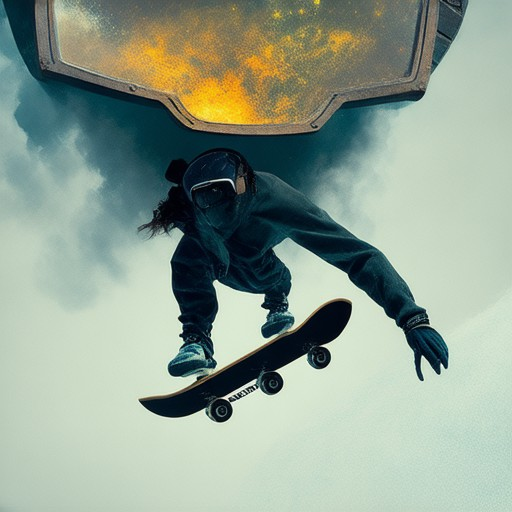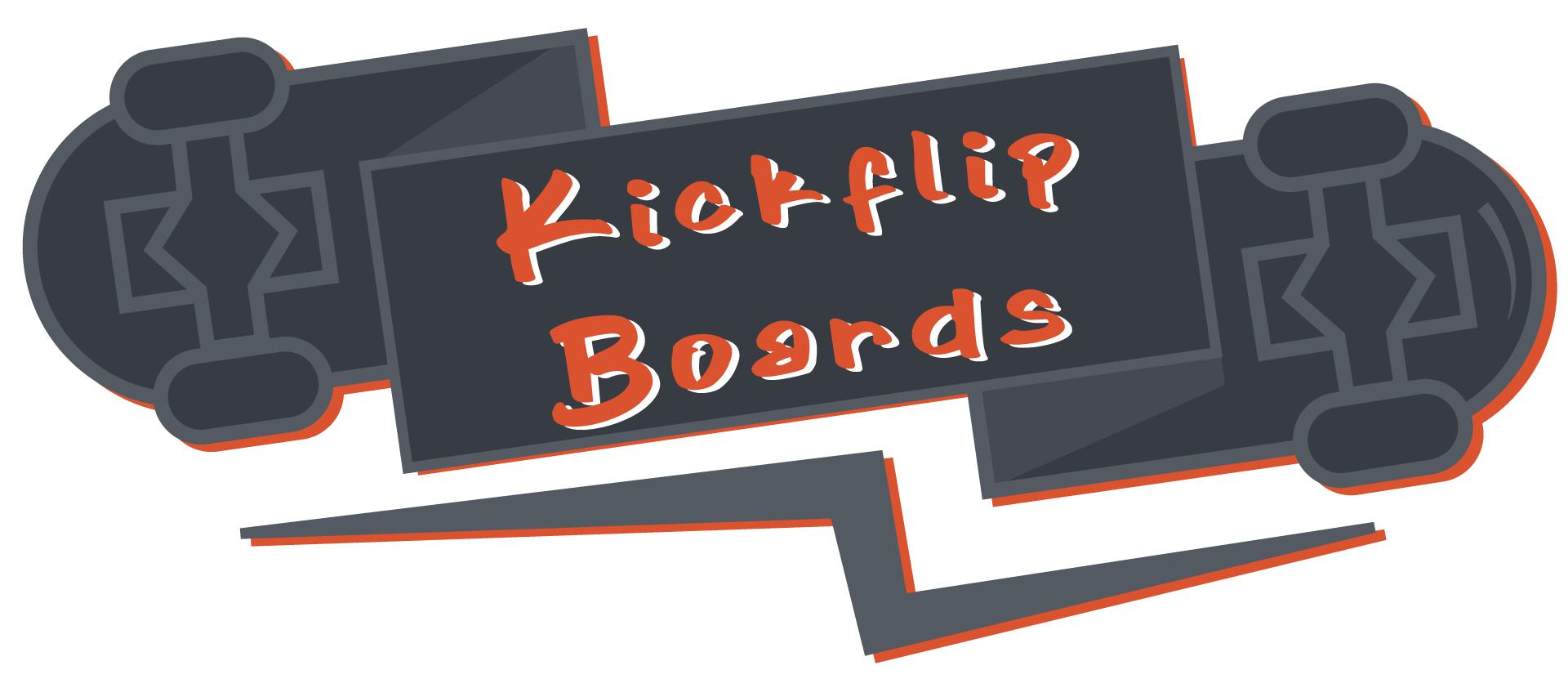Skateboarding offers an exhilarating way to explore your creativity and stay active, but it’s essential to approach it with caution to ensure safety. Whether you’re a seasoned skateboarder or new to the sport, understanding how to practice skateboarding safely is crucial to minimizing risks and enjoying the experience fully. From setting up a secure practice area at home to equipping yourself with the right protective gear and adopting safe techniques, this guide will walk you through everything you need to know to stay injury-free while mastering the art of skateboarding. By prioritizing safety, you can maximize your enjoyment of this thrilling sport and reduce the chances of encountering common hazards. Let’s dive into the essential tips and strategies that will help you practice skateboarding safely and confidently.
Key Takeaways
- Wear protective gear like helmets, knee pads, and wrist guards to minimize injury risks.
- Regularly check your skateboard and gear to ensure everything is in good condition.
- Warm-up and stretch before riding to prevent muscle strains and stiffness.
- Start slowly and practice regularly to master techniques without rushing.
- Focus on balance and control to maintain stability while skateboarding.
- Take breaks and allow rest periods to prevent overuse injuries.
- Scan your surroundings to avoid obstacles and potential collisions.
- Dress in bright, visible clothing to enhance visibility.
- Use knee, elbow, and wrist guards to protect vulnerable areas.
- Maintain proper posture to reduce strain on your back and neck.

How to Learn Skateboarding Safely
Learning skateboarding can be an exciting journey, but it’s important to approach it safely and effectively. Here are some tips to help you get started:
- Start with the Basics:** Begin by mastering the fundamentals like standing on the board, balancing, and moving slowly. Practice on a smooth surface like grass or pavement.
- Focus on Balance:** Stay low to the ground and keep your knees bent at all times. This will help you maintain better control and prevent falls.
- Learn to Fall Correctly:** If you do fall, aim to roll with the motion instead of trying to jump up immediately. This reduces the risk of injury and makes getting back up easier.
- Wear Protective Gear:** Invest in a helmet, knee pads, and wrist guards to protect yourself during practice sessions.
- Choose the Right Board:** A sturdy, lightweight skateboard designed for beginners can make the learning process smoother. Check out our selection of boards tailored for newcomers at kickflipboards.com .
- Practice Regularly:** Consistency is key. Dedicate a few minutes each day to work on your skills, whether it’s ollies, grind rails, or manual tricks.
- Seek Guidance:** Consider taking lessons from experienced skaters or joining a local skateboarding community. Our forums and resources can connect you with mentors who can offer personalized advice and tips.
Remember, patience and persistence are crucial. Don’t rush the learning process and enjoy the thrill of mastering new tricks while staying safe!
How to Practice Skateboarding at Home
Practicing skateboarding at home can be challenging but rewarding. Here’s a step-by-step guide to help you get started:
- Check Your Equipment: Inspect your skateboard for any damage or worn-out parts. Ensure your wheels, bearings, and trucks are in good condition. Tighten any loose bolts and adjust your bearings if necessary.
- Set Up a Mini Ramp: Create a makeshift ramp using a sturdy piece of cardboard or a low step stool. Place it against a wall to save space and prevent it from moving.
- Protective Gear: Wear protective gear at all times. Consider using knee pads, elbow pads, and a helmet to minimize injuries during falls.
- Learn Basic Techniques:
- Foot Placement:** Start with a stance where your feet are shoulder-width apart and slightly turned outward. This provides better balance and control.
- Balancing:** Practice standing still and shifting your weight from one foot to the other. This will help you get a feel for the board’s movements.
- Riding:** Begin by pushing the tail of the board gently. Keep your eyes forward and focused on your landing spot to maintain balance.
- Practice Tricks Gradually:
- Ollies:** Watch tutorials to master the ollie. Practice popping the nose and shoving the tail simultaneously while keeping your feet steady.
- Grinds:** Start with the 50-50 grind, where you slide the board between the rail and deck. Focus on your body positioning and control.
- Pop Shove-it Trick:** Once comfortable with the ollie, experiment with the pop shove-it by sliding the board into the rail and popping it upwards.
- Board Control: Work on turning the board by shifting your weight and using your body’s momentum. Practice in a small area to avoid collisions with furniture or walls.
- Safety First: Clear the area around you to prevent accidents. Set aside a dedicated space in your home for skateboarding to reduce hazards.
- Take It Slow: Don’t rush the learning process. Spend time perfecting each move before moving on to more advanced tricks. Celebrate small victories to stay motivated.
- Seek Feedback: Join online skateboarding communities or find a local friend who can spot you and offer tips. Constructive criticism will help you improve faster.
- Stay Motivated: Set achievable goals, like mastering the kickflip or nailing a specific trick. Keeping track of your progress will encourage you to keep pushing forward.
By following these steps and consistently practicing, you’ll be well on your way to improving your skateboarding skills at home. Remember, patience and persistence are key to becoming a confident skateboarder!

How to Train Your Body for Skateboarding
To effectively prepare your body for skateboarding, it’s essential to focus on strength, flexibility, and balance. Here’s a structured plan to help you get started:
- Strength Training
- Core Exercises: Perform 3 sets of 15-20 reps for exercises like push-ups, planks, and Russian twists. Aim to do these 3 times per week.
- Upper Body Strength: Include pull-ups (or assisted pull-ups if needed), bench presses, and shoulder presses. Target 2-3 times weekly.
- Leg Strength: Incorporate squats, lunges, and calf raises. Do these 2 times a week to enhance leg power and stability.
- Flexibility and Balance
- Stretching Routine: Spend 10 minutes daily stretching key muscle groups like hamstrings, quads, and chest. Include dynamic stretches before workouts and static stretches afterward.
- Balance Exercises: Practice single-leg balances and wobble board exercises 2-3 times weekly to improve your ability to stay upright on the board.
- Yoga Sessions: Add a weekly yoga session focused on poses that enhance flexibility and balance, such as downward dog and tree pose.
- Plyometric and Explosive Movements
- Box Jumps: Start with low boxes and gradually increase height. Aim for 2-3 sets of 8-12 reps to build explosive power for tricks like kickflips.
- Burpees and Mountain Climbers: These can be added 2-3 times weekly to boost cardiovascular fitness and core strength.
- Cardiovascular Endurance
- Running or Cycling: Engage in 30-45 minute sessions 2-3 times weekly to improve stamina and overall physical conditioning.
- Skateboard-Specific Cardio: Ride your skateboard for 15-20 minutes on flat ground or varied terrain to mimic real-world conditions.
- Nutrition and Recovery
- Diet: Maintain a balanced diet rich in lean proteins, carbohydrates, and healthy fats. Consider tracking your meals to ensure you’re meeting nutritional needs for recovery and energy.
- Hydration: Drink plenty of water, especially before, during, and after workouts to stay hydrated and prevent cramps.
- Rest and Sleep: Prioritize 7-8 hours of quality sleep nightly to aid muscle recovery and reduce fatigue.
- Progression and Adjustment
- Start with a modified routine, focusing on major muscle groups 2-3 times weekly, and incorporate rest days to allow your body to recover.
- Listen to your body and adjust your workout intensity and frequency as needed to avoid burnout and injury risks.
By following this comprehensive approach, you’ll develop the strength, flexibility, and endurance needed to enjoy skateboarding while minimizing the risk of injuries. Stay consistent, and progress will come naturally over time!

How to Not Get Injured Skateboarding
Preventing skateboarding injuries requires a combination of preparation, awareness, and proper technique. Here are some essential tips to help you stay safe and avoid common injuries:
General Safety Tips
- Wear Protective Gear: Always don’t forget your helmet, knee pads, and wrist guards. These are your first line of defense against falls and collisions.
- Check the Board and Gear: Before each ride, inspect your skateboard for loose components, worn-out wheels, or uneven edges. A well-maintained board reduces the risk of unexpected issues during use.
- Warm-Up Before Riding: Similar to any physical activity, warming up helps prepare your muscles and prevents stiffness or strain. Do some light jumping jacks or arm circles before hitting the park.
Technique Tips
- Start Slow and Practice Regularly: Learning new tricks or maneuvers at a slower pace reduces the likelihood of rushed mistakes. Take your time mastering each move.
- Focus on Balance and Control: Maintain your weight distribution evenly and stay centered over your board. This stability helps you stay upright and avoids awkward falls.
- Avoid Overuse Injuries: Skateboarding involves repetitive motions, so take breaks between rides to give your muscles time to recover. Overuse injuries can occur if you push yourself too hard without adequate rest.
Know When to Rest
- Pay Attention to Fatigue: If you feel tired or unsteady, take a break. Continuing to skateboard while fatigued increases the risk of accidents and injuries.
- Listen to Your Body: Soreness is normal, but persistent pain indicates it’s time to rest. Ignoring pain can lead to further damage and longer recovery times.
Stay Aware of Your Surroundings
- Scan the Area Before Moving: Be cautious of obstacles, pedestrians, and other skateboarders. Clearing the path ahead helps prevent collisions and sudden stops.
- Be Visible to Others: Wear bright clothing and use reflective accessories to ensure others can see you, especially in busy areas or low-light conditions.
Common Injury Points to Protect
- Knees and Elbows: These are the most vulnerable parts of your body while skateboarding. Wearing knee pads and elbow pads can significantly reduce the impact of falls.
- Wrists and Hands: Using wrist guards helps prevent injuries from falls or impacts, especially when doing tricks that involve hand placement.
- Back and Neck: Proper posture and balance help protect your spine and neck from hyperextension or strain during maneuvers.
By following these tips, you can enjoy skateboarding while minimizing the risk of injuries. Remember, safety is key to maximizing your fun and extending the lifespan of your skateboard equipment. Always skate responsibly and respect the rules of the road—or rather, the skatepark!
How to Practice Skateboarding Safely
Skateboarding can be an exhilarating activity, but it requires careful attention to safety to prevent injuries. Here are some essential tips to help you practice safely:
- Protective Gear: Invest in essential gear like a helmet, knee pads, elbow pads, and wrist guards. These items help reduce the risk of injuries from falls or collisions. Check out Kickflip Boards for recommended gear.
- Footwear: Wear skate-specific shoes with soft soles designed for better grip and balance. Brands like Vans and Nike offer excellent options for beginners.
- Clothing: Opt for breathable, flexible clothing that allows freedom of movement while offering protection against scrapes. Look for brands with specific skate lines, such as Pink .
- Warm-Up and Stretching: Before practicing, perform a quick warm-up and stretch. Include leg swings and dynamic stretches to prepare your muscles, reducing the risk of strains.
- Foot Positioning: Practice maintaining a balanced stance with weight slightly back and knees bent. This helps with stability and prevents falls due to catching edges incorrectly.
- Landing Technique: Work on absorbing impact when landing by bending your knees and hips. Watch tutorials from experienced skaters to master smooth landings and minimize stress on your body.
- Turning Techniques: Focus on making wider turns initially to build control and reduce strain on your arms. Gradually incorporate sharper turns as you become more comfortable.
- Safety Awareness: Skate in open, quiet areas to avoid accidents and congestion. Prioritize safety by scanning your surroundings and wearing visible clothing.
- Regular Practice with Rest: Aim to practice 2-3 times a week, allowing adequate rest days to prevent muscle fatigue and promote recovery.
- Stay Aware of Surroundings: Keep an eye out for obstacles and pedestrians. Stay alert to avoid collisions and injuries.
- Know When to Rest: Stop if you feel pain or fatigue. Rest and ice sore muscles to prevent minor issues from escalating into serious injuries.
By following these tips, you can enjoy skateboarding while minimizing the risk of injuries. Remember to always prioritize safety and have fun!

Stay Injury-Free While Skateboarding: Essential Safety Tips
Skateboarding can be an exhilarating activity, but it also requires caution to avoid injuries. Here are some proven strategies to help you stay safe while enjoying your time on the board:
1. Wear Proper Protective Gear
Protective gear is your first line of defense against potential falls and collisions. Always wear a helmet to protect your head, knee pads to cushion falls, and wrist guards to prevent injuries from falls.
2. Warm Up Before Practicing
Skipping a warm-up can lead to muscle strains or sprains. Take a few minutes to stretch your legs, arms, and core before hitting the pavement. This helps improve flexibility and reduces the risk of injury during more intense moves.
3. Master Techniques Gradually
Learning new tricks or maneuvers too quickly can lead to mistakes. Practice each move slowly and under controlled conditions. Focus on perfecting your balance and control before attempting more complex tricks.
Choosing the Right Surface
Skateboarding on uneven surfaces can increase the risk of falls. Look for smooth, flat surfaces like paved roads, skate parks, or empty parking lots to minimize your chances of tripping or losing balance.
5. Stay Hydrated
Dehydration can affect your coordination and balance, making it harder to maintain control while skating. Drink plenty of water before, during, and after your session to stay hydrated.
6. Stay Alert and Aware of Your Surroundings
Always keep an eye on your surroundings. Watch out for obstacles, pedestrians, and vehicles. Being aware of your environment helps you react faster and avoid potential hazards.
7. Take Regular Breaks
Overexertion can lead to fatigue, which increases the risk of accidents. Take short breaks during your session to rest, hydrate, and recharge your energy levels.
8. Know Basic First Aid
While serious injuries are rare, knowing how to handle minor scrapes and bruises can save you time and reduce panic. Carry a small first aid kit with band-aids, antiseptic wipes, and pain relievers.
Additional Resources
For more tips and insights, we recommend checking out Kickflip Boards for comprehensive guides on skateboarding safety and technique. Additionally, consider enrolling in professional skateboarding lessons to enhance your skills safely.
Conclusion
By following these safety guidelines, you can enjoy skateboarding while minimizing the risk of injury. Remember to always prioritize protection, preparation, and awareness to have a fun and injury-free experience on the board.




0 Comments